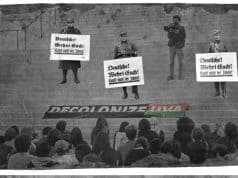Albemarle red-light cameras—is there really a safety improvement?
by National Motorists Association
 The Albemarle, VA police recently released red-light camera data for the Rio Road and Route 29 intersection that, according to Captain John Parrent, “…translates into improved traffic safety for all vehicles using that intersection….” Wait, not so fast, Captain Parrent.
The Albemarle, VA police recently released red-light camera data for the Rio Road and Route 29 intersection that, according to Captain John Parrent, “…translates into improved traffic safety for all vehicles using that intersection….” Wait, not so fast, Captain Parrent.
Reporter Brandon Shulleeta’s January 11, 2011 story (“Rio-29 cameras cut number of red-light runners”) in The Daily Progress notes that the number of camera activations at the intersection decreased significantly from an initial period when only warnings were issued to a subsequent period of the same duration (27 days) when the police were mailing out penalties for violations.
During the initial “warning” period, the red-light cameras snapped 2040 vehicles, resulting in 464 warn- ings being issued. The subsequent “citation” period produced 412 tickets from 998 camera flashes. So, after motorists passing through the Rio-29 intersection had almost a month of exposure to photo enforcement, half as many triggered the cameras. Sounds good, but…
If traffic safety is the issue—and we should all be able to agree that it is—then measuring the impact of photo enforcement by the change in total camera activations misses the point. The Albemarle police should be providing true safety statistics, not activity-based data. How did the accident rates and the injury rates compare between the warning and penalty periods? Those data are the real indicators of how the intersection safety has been affected by the presence of the red-light cameras.
Actually, the absolute number of camera activations from one period to another is misleading in its own right. What were the traffic volumes in the respective time periods? Drivers have been known to reroute their usual routines to avoid the risk of being penalized at red-light camera intersections. The camera activation rate, the number of flashes per 1000 vehicles, for example, is the true measure of camera activity when comparing one period of time to another.
We hope the Albemarle police will release accident rate, injury rate and camera activation rate statistics for not only the “warning” and the “citation” periods at the Rio Road and Route 29 intersection, but also for a similar time span when there were no ticket cameras present. Let Albemarle residents and commuters evaluate the impact of the red-light cameras based on true safety metrics during actual “before and after” time periods.
Download the editorial on NMA letterhead (.PDF).








